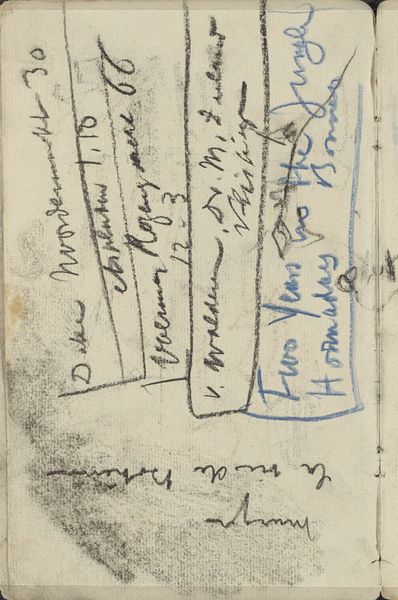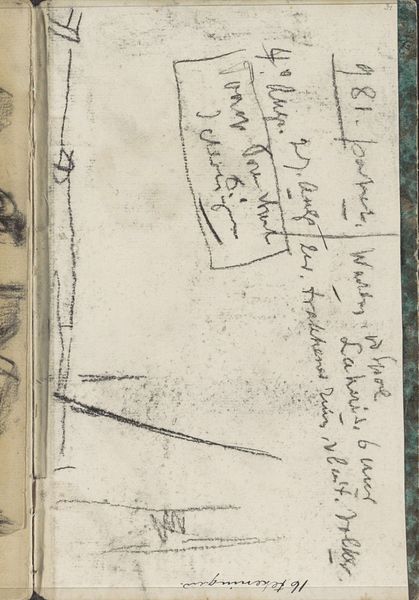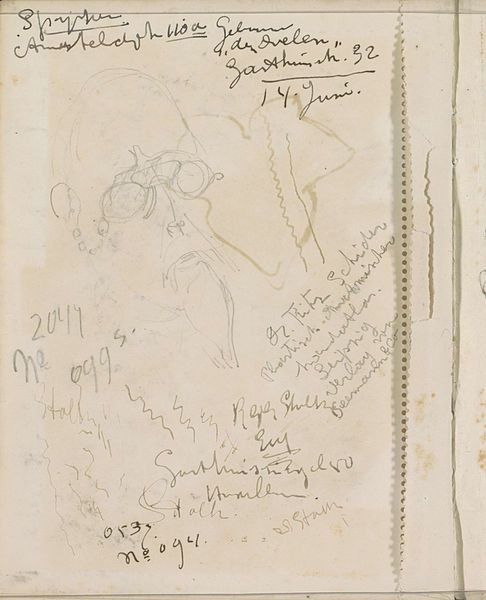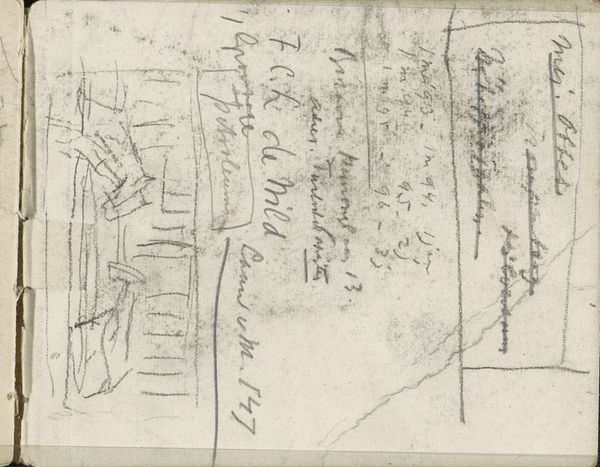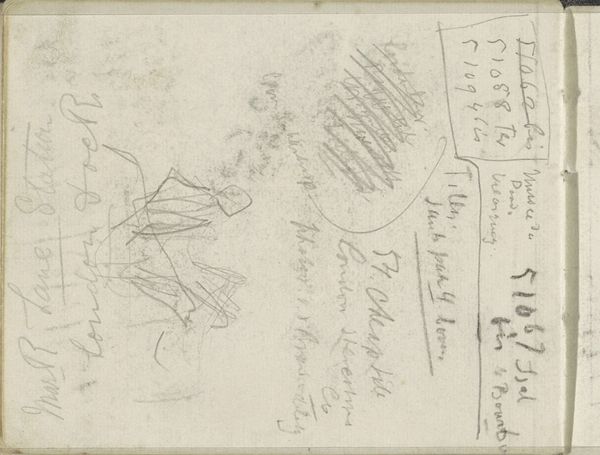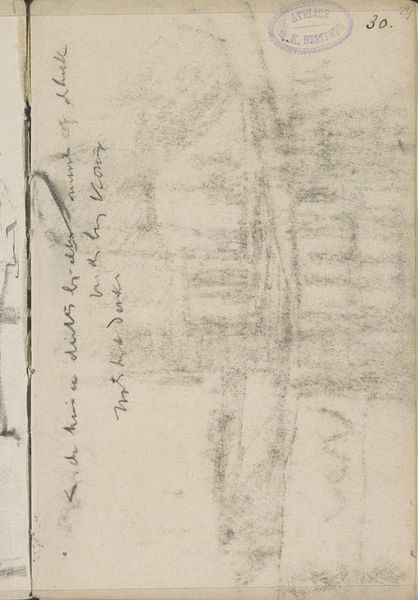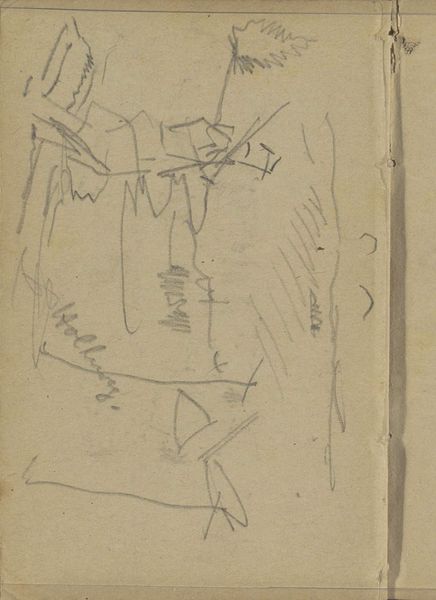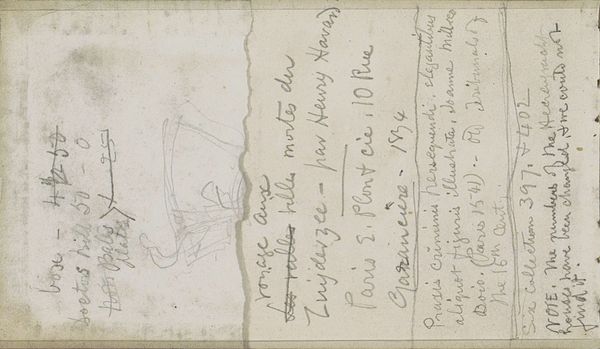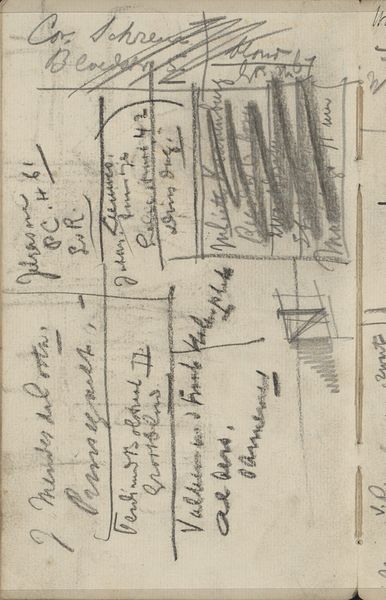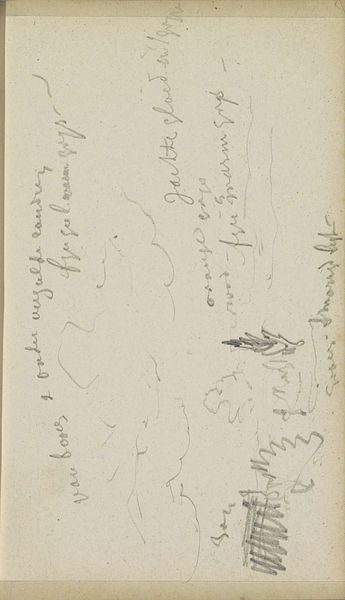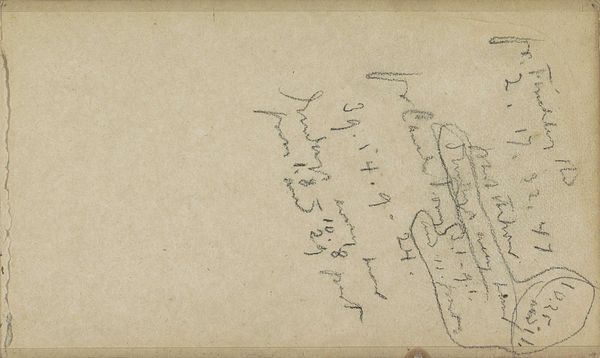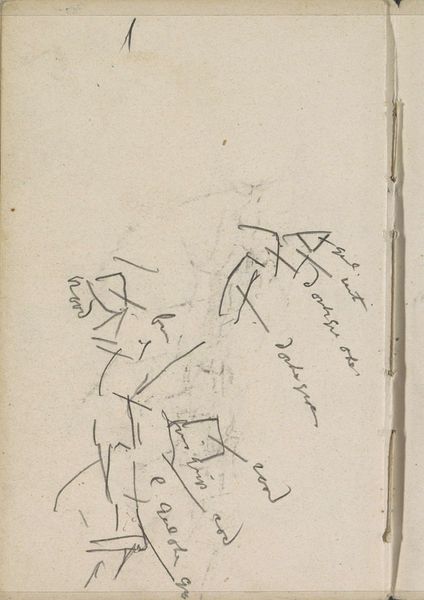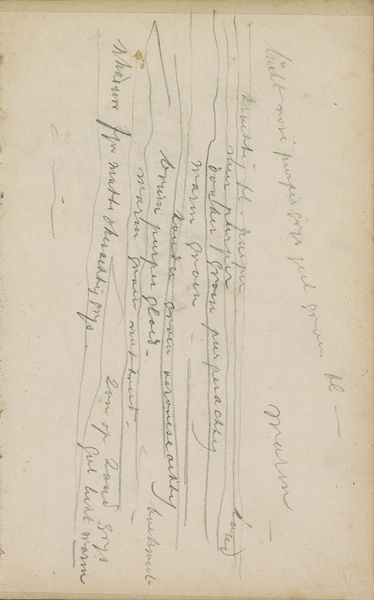
Copyright: Rijks Museum: Open Domain
Curator: A sketch by George Hendrik Breitner, a "Man met hoed", sometime between 1886 and 1903. The lines are so quick, almost like a fleeting thought. What catches your eye about this drawing? Editor: The way Breitner uses pencil on paper. It seems almost like a casual notation, rather than a formal portrait. What can you tell me about the significance of such a seemingly "informal" approach to portraiture during this period? Curator: Think about the late 19th century and the rise of industrial production. Breitner’s choice of readily available, mass-produced materials – pencil and paper – challenges the traditional art world’s focus on precious materials and meticulous techniques. How might this relate to his subject matter, often scenes of everyday urban life? Editor: I see what you mean. He’s choosing to depict an ordinary man, quickly, using the tools of the everyman. Is he making a statement about art’s accessibility by embracing these materials? Curator: Precisely! Breitner positions himself as an observer and recorder of modern life, not just some detached master crafting masterpieces. He uses these humble materials to create a portrait. Consider also how this drawing was made within the pages of a sketchbook—likely mass-produced and meant for jotting quick observations, not finished art. What does this tell us about the status of the "artwork" itself? Editor: Interesting…it makes you question the intention and whether he even considered this a final product, which, in turn, influences the interpretation of its meaning and place in art history. Curator: Exactly. Breitner's art makes us examine the conditions of production. That is how we connect art to life. Editor: That makes so much sense, and allows a much wider consideration of his work than focusing on solely its aesthetic qualities.
Comments
No comments
Be the first to comment and join the conversation on the ultimate creative platform.
